Britain’s historic fishing villages are living museums. These picturesque ports retain the unique spirit of our coast, and their narrow lanes, tiny harbours and cosy atmosphere can be enjoyed at any time year.
In spring and summer, the villages' restaurants, boats and hotels are in full swing. As autumn rolls around they begin to quieten down and life rolls at a more peaceful pace. Winter is a magical time too, and you'll often find you have the streets, harbours and beaches almost to yourself.
Explore traditional cobbled streets and quaint harbours with our guide to the prettiest fishing villages to visit in the UK.
Porthgain, Pembrokeshire
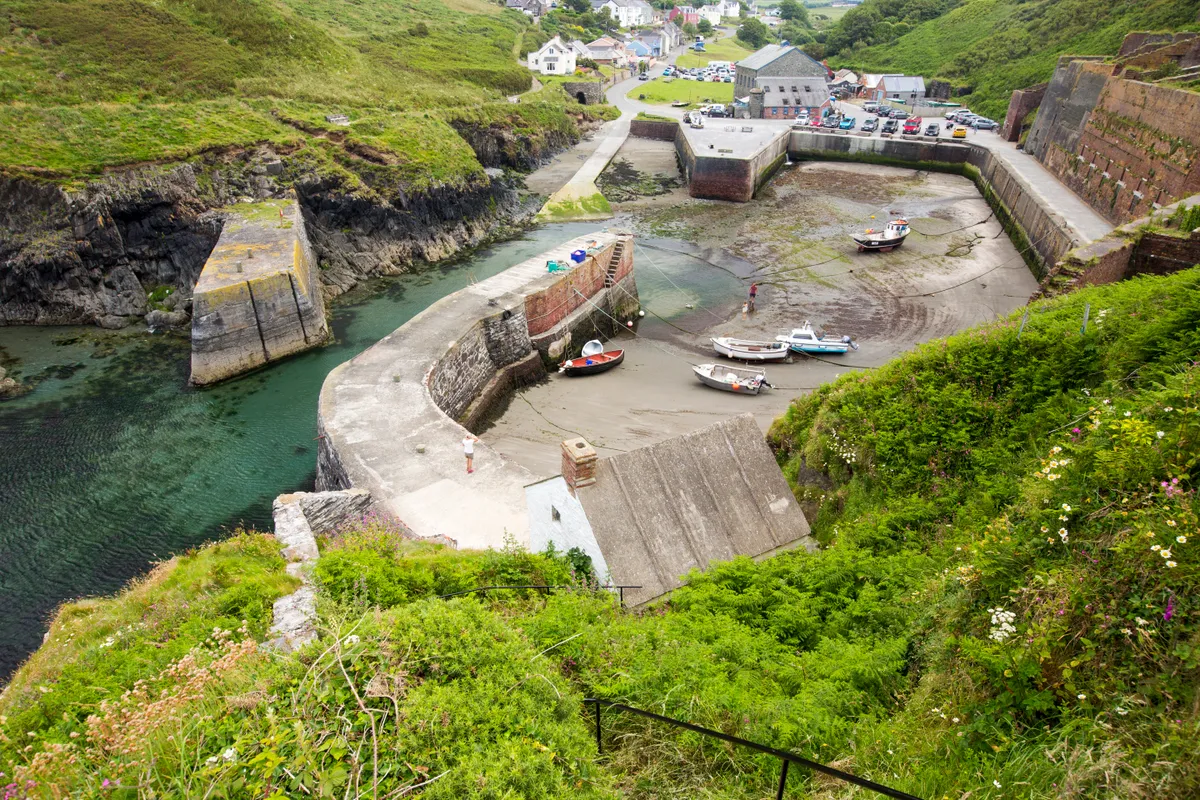
Enviably positioned on the stunning Pembrokeshire Coast, just north of St David’s, Porthgain is an unusual little port set among dramatic scenery. Originally a fishing village, the seafront green is surrounded by lobster pots and crog loft cottages once used by the fishermen. But in the early 19th century, mining transformed the village, as first slate, then bricks and building stones were exported far and wide.
Huge hoppers now tower above the over-sized harbour and, on top of the cliff, you can explore the old quarries and discover the famous ‘Blue Lagoon’, a gorgeous aquamarine sea pool loved by wild swimmers and cliff jumpers. Everyone should visit the Sloop Inn, decked with maritime memorabilia, but gourmets should head to The Shed Bistro for award-winning fresh fish and cream teas. Fishing boats offer day trips and Traeth Llyfn beach is one of the best in Wales.
More related content:
Clovelly, Devon

Exquisite Clovelly is as ancient as it is quaint. It was first noted in the Domesday book as belonging to William the Conqueror’s wife, before three great Devon families ruled this sea estate for the next 800 years. Fishing boats were built using trees from the steep forest around and trade was established with Wales, across the Bristol channel. Outgoing boats were stocked with herring and returned laden with Welsh limestone, which was burnt in kilns with ‘culm’ to produce a lime used to fertilise, or ‘sweeten’, the acidic Devon soil. Herring made Clovelly wealthy, but as with so many British coastal fishing ports, their decline brought poverty to the whole coast.
Today the village prospers again: there is freshly caught bass and crab at the Red Lion Hotel bar and its bustling harbour is filled with visitors fishing from the quay or wandering its steep, car-less cobbled streets, enjoying its stories and galleries. clovelly.co.uk
Crail, Fife
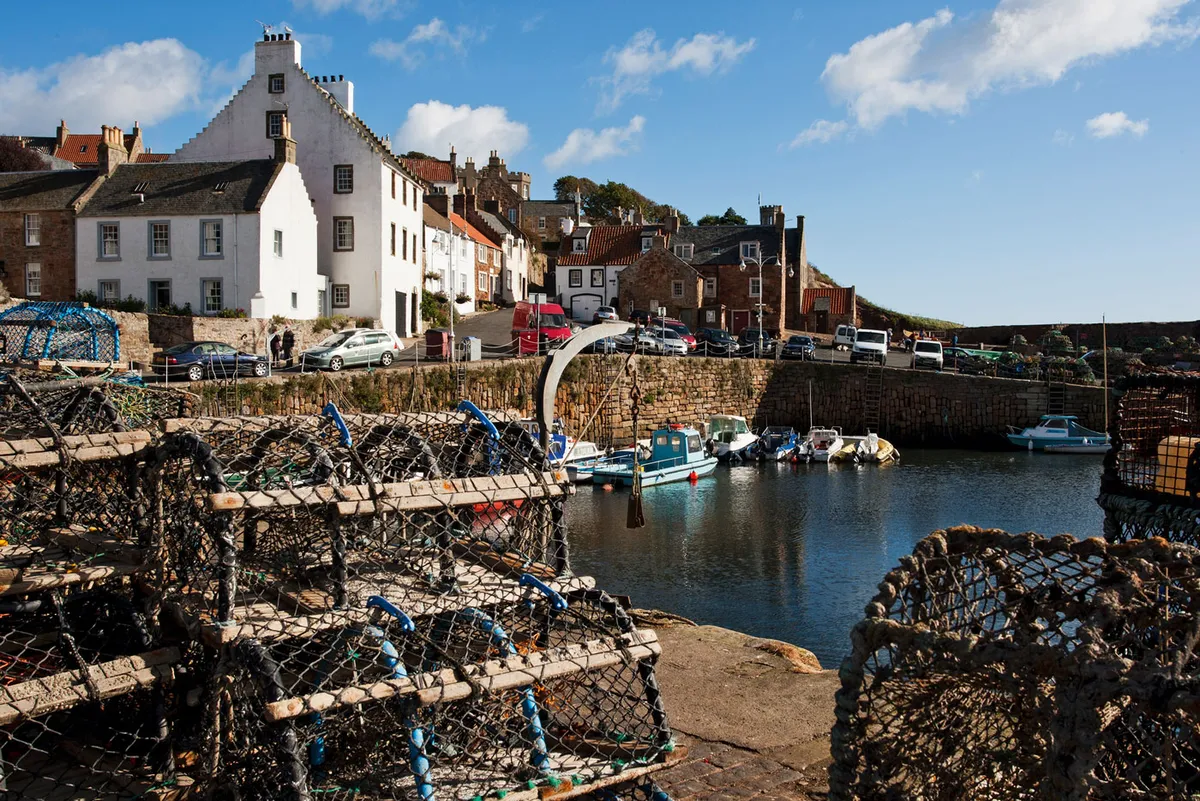
The history of Crail hails back to medieval times when its market place was the largest in Europe. Tiny cobbled streets called ‘wynds’ snake down to the 16th-century harbour and its long mercantile history is seen in its Dutch-inspired architecture: stepped roof lines and belfries. In 1862, the famous lighthouse-builder Robert Stevenson oversaw the building of the west pier, securing its future as an important fishing port.
Today creel boats and seasonal fishing boats still seek shelter within its walls. You can sample Crail crab, lobster and langoustines – cooked right in front of you – from The Lobster Hut, right on the harbour. Six miles off the coast are the puffin and guillemot colonies on the Isle of May (boats leave from nearby Anstruther), and September is the time to look out for the skeins of pink-footed geese arriving to over-winter. aboutcrail.co.uk
Brancaster Staithe, Norfolk

The old Roman port of Brancaster Staithe on Norfolk’s northern coast bustles with tiny clinker sailing boats docking and unloading at the wooden quays and packing sheds. The boats follow the network of tidal creeks out to the North Sea via the nature reserve of Scolt Head Island, to fish among some of the finest saltmarsh in England.
Until October you can sample fresh crab, lobster, home-smoked eel or salmon at The Crab Hut on the harbour. Now is also the time to enjoy the first native oysters of the season – an Act of Parliament states these cannot be eaten from May to August. The White Horse Inn serves Brancaster Staithe oysters with fine Norfolk wine. Head west along the coast path to reach Brancaster beach, with miles of golden sands, and Titchwell Marsh nature reserves, with outstanding birdwatching. burnhamdeepdale.co.uk
Beer, Devon

Devon’s Jurassic Coast was named England’s first World Heritage Site due to its natural beauty and rich geology and the little seaside fishing village of Beer is an ideal place to enjoy both. Its shingle beach is backed by stunning sheer chalk cliffs rich in fossils and flint that was prized in the Stone Age.
Today this barrier provides a sun trap, warming the pebbles and clear water that laps its shelving shore. Colourful fishing boats decorate the beach and offer visitors a day’s deep-sea adventure fishing for mackerel. The more sedate can rent striped deckchairs by the hour and gaze at fisherman bringing up their haul. For the best food and inspiring views, hike up to Beer Head to enjoy a sunset dinner at the Beer Head Bistro. Or walk 45 minutes west along the coast path to Branscombe beach for a crab sandwich at its lovely Sea Shanty Beach Café. beer-devon.co.uk
Craster, Northumberland
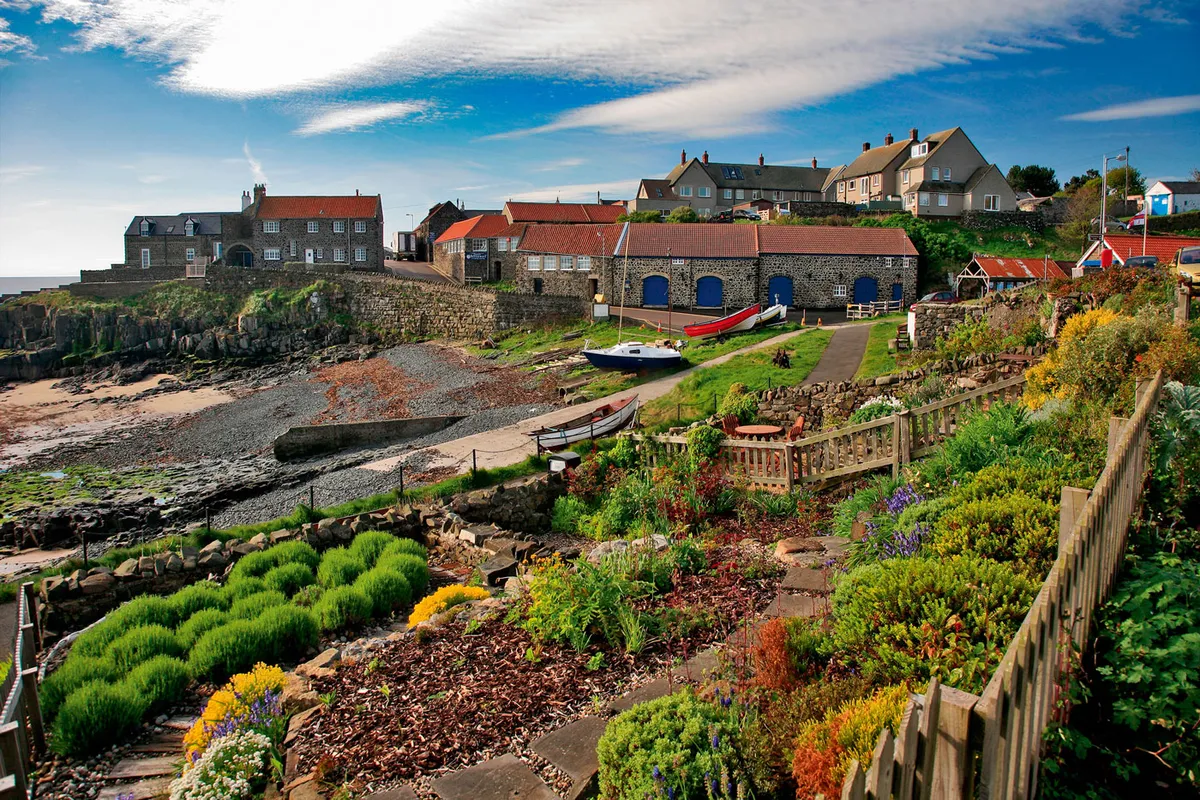
Kippers and castles are the two main draws to Northumberland’s thriving coastal culture, and neither disappoint. Craster, along with Seahouses further up the coast, were once the most important places for kippers in England, smoking more than 25,000 herrings a day. They were gutted by Scottish fishwives who lived in ‘kip houses’ where they also slept (hence the saying ‘having a kip’).
Today, Craster kippers are still cured in the original smokehouses, such as Robson’s Smokehouse, which has a restaurant on the harbour. You can also enjoy these pungent delicacies, hot and buttered in a bun, from Andy Grant’s caravan or at the Jolly Fisherman. After a hearty meal, walk north along the grassy headland to the foreboding remains of Dunstanburgh Castle. Until October, fishing trips leave from the harbour on the hunt for cod and ling. kipper.co.uk
Plockton, Ross and Cromarty
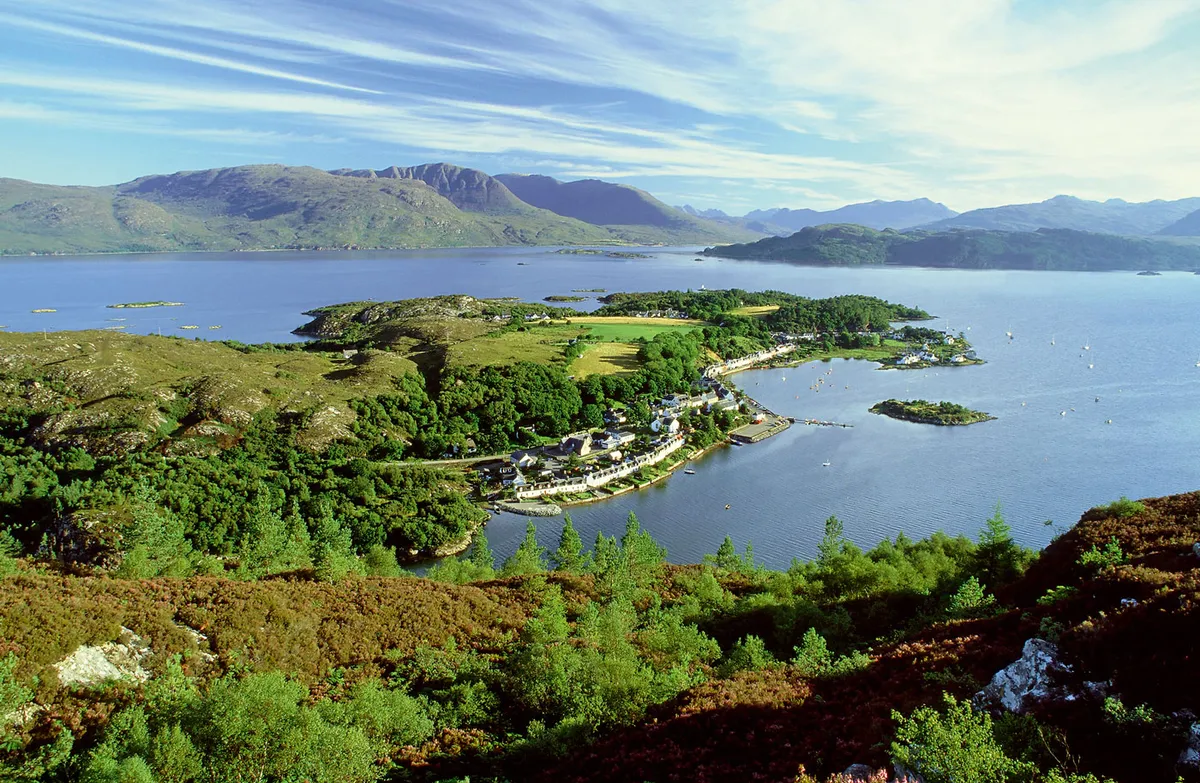
Warmed by the gulf stream, picturesque Plockton combines huge mountain views and seascapes with Gaelic village life. White-washed cottages and palm trees line the shore, illuminated by a unique light so beloved by artists and photographers around the world. If you think this village is almost too perfect to be natural, you are right: Plockton was a planned fishing village, conceived by the local laird at the end of the 18th century in an attempt capitalise on rich herring stocks.
Prawns have now replaced the herring and you can sample them at their freshest, straight from the pier, on weekday afternoons, or cured in the smokehouse at the Plockton Inn. Take a one-hour trip out on Sula Mhor, Calum Mackenzie’s boat, to see the seals, or simply wander around Loch Carron’s shore – if you are lucky you will see otters or the rare pine martins that thrive here. plocktoninn.co.uk
Mousehole, Cornwall
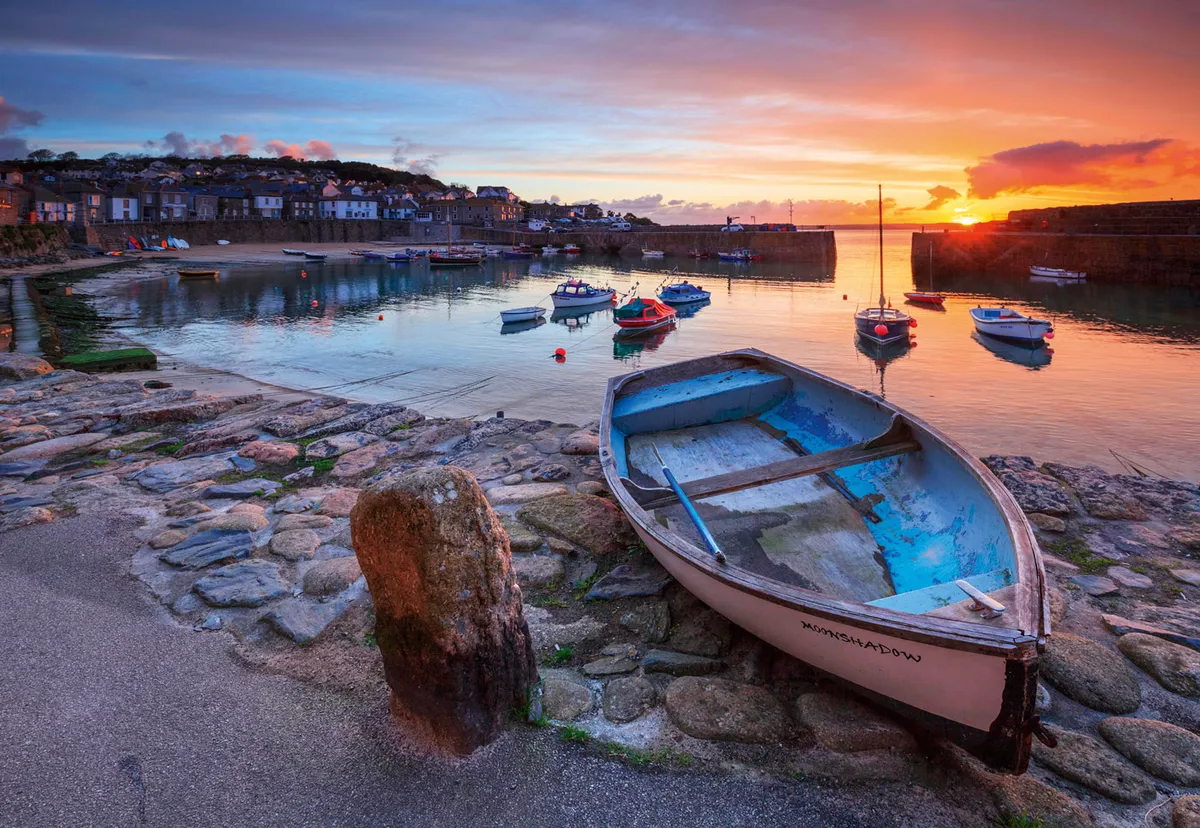
It’s hard to imagine this idyllic little fishing port (pronounced mow-zol) being a principle port of the area, but it is for this reason that the Spaniards destroyed it in 1596. Resurrected, it became one of the last strongholds of Cornish language in the 17th century and many unusual traditions live on here – such as eating pilchard and egg ‘stargazy pie’ in December.
Today its sandy harbour, warren of little cobbled streets and views of St Michael’s Bay make it perfect for visitors, but it is neighbouring Newlyn that has grown to become one of the largest and most important fishing ports in the UK, with a strong artist community as well. Rise early and you can visit its morning fish market, purchase the freshest catch of the day and then head back to The Old Coastguard Hotel for a long fish lunch in their palm garden overlooking the sea. oldcoastguardhotel.co.uk
West Mersea, Essex
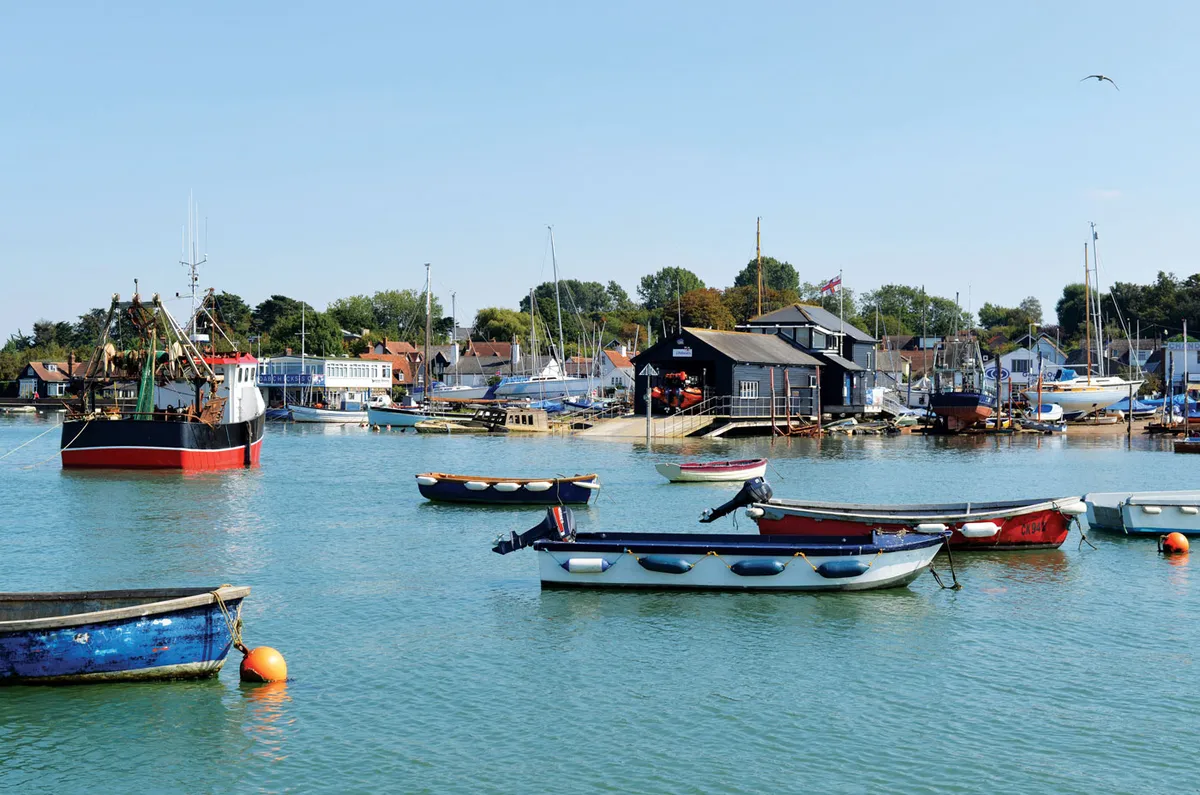
Washed by the clean river waters of the Colne to the east and the Blackwater to the west, Mersea Island has always provided ideal conditions for shellfish, particularly oysters. Famed since Roman times, the island’s pearly bivalves are as highly regarded today and there’s nothing better than enjoying them at the popular Company Shed – just bring your own cold white wine, maybe from Mersea Island’s own vineyard, and fresh crusty white bread.
The waterside sheds are home to several other great places to buy oysters and seafood, as well as a few cafés, galleries and fishing boats. Children love crabbing from the pontoon and the sandy and shell beach is lined with multicoloured beach huts. Mersea Island is famous for its wading birds – take a trip on the Lady Grace to fish and appreciate the island from the sea. essexboattrips.co.uk
Portloe, Cornwall
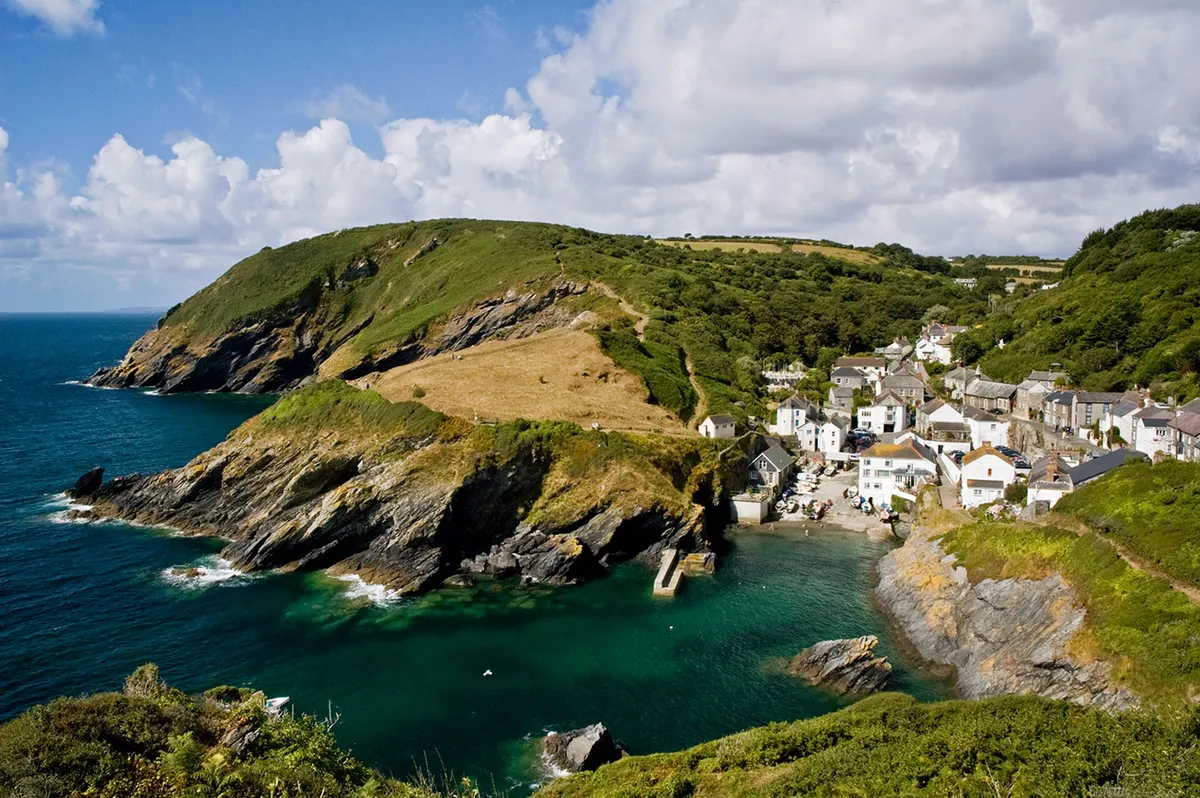
As charming on stormy nights as on still summer days, Portloe is the perfect natural harbour, nestled in one of the Roseland Peninsula’s steep valleys, sheltered from the sea behind a rocky promontory. An important pilchard port in the 17th and 18th century, this isolated cove became a smugglers paradise due to its remote, rugged location.
Walk the steep streets today to imagine the secret places where barrels of French brandy and contraband might have been stashed. Rich with history and myth, the Lugger Inn is one such place. It has been transformed into a first-class restaurant with rooms and sits unassumingly on the harbour front. From its window, watch lobsters and crabs being landed from the working boats and follow their short journey up the jetty right to your plate. Alternatively, try a crab sandwich at the lively Ship Inn. theluggerhotel.co.uk
Cadgwith to Lizard Point, Cornwall
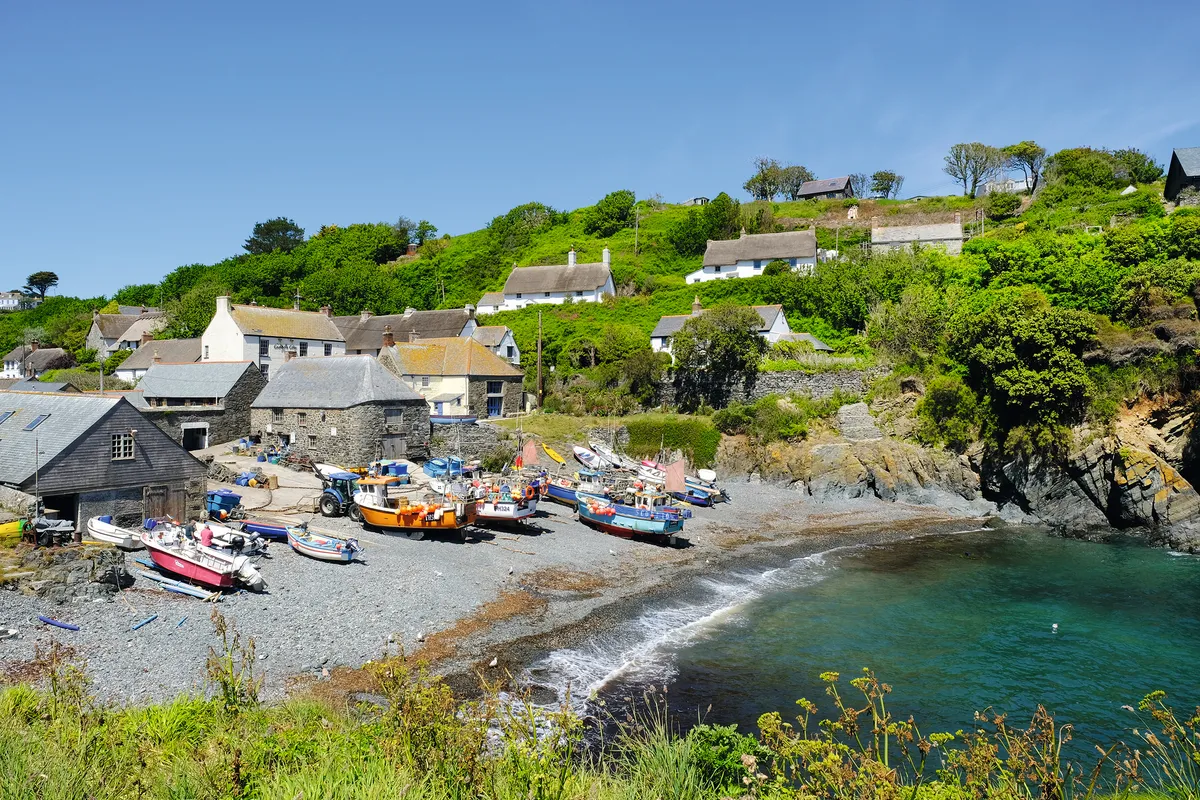
Battered by Atlantic swells on Cornwall’s Lizard Peninsula, Cadgwith is the southernmost fishing village in the UK. Thatched cottages cluster together on the slopes of the valley, while a stream runs down to the sand and across the shingle beach.
Old pilchard cellars, winches, and the former lifeboat house – active until 1963 and now home to the local gig club – are evocative reminders of the village’s colourful past.
Cadgwith was built to service the thriving pilchard industry in the late 1700s and 1800s, when huge shoals migrated to Cornish waters. At its peak, there were six pilchard companies in operation here. Lofts were used for storing nets, capstan houses for winching boats ashore, and cellars for pressing the fish to extract the oil, which was salted and baulked, and packed into ‘hogshead’ barrels.
Walberswick, Suffolk

Set in the wildlife-rich Suffolk Coast National Nature Reserve, Walberswick is surrounded by marshland, with long views across water meadows and reedbeds, and a sandy, shingly, dune-backed beach that is luxuriously quiet.
The boats bobbing on the River Blyth may be for leisure fishing these days, but black-stained fisherman’s huts on stilts evoke the area’s fishing heritage.
Runswick Bay, North Yorkshire

The pristine, mile-long sands of the former fishing village of Runswick Bay on the North Yorkshire coast were recently crowned “Britain’s best beach” by the Times and Sunday Times.
With its sheltered, sweeping bay, golden sands and delightful cluster of pantile red-roofed cottages tumbling down to the sea, it is a firm favourite with many families. The beach, which once provided anchorage for scores of brightly coloured fishing boats, is now more popular for rockpooling, Jurassic Age fossil-hunting and bracing coastal walks.
Abersoch, Llŷn Peninsula, Gwynedd
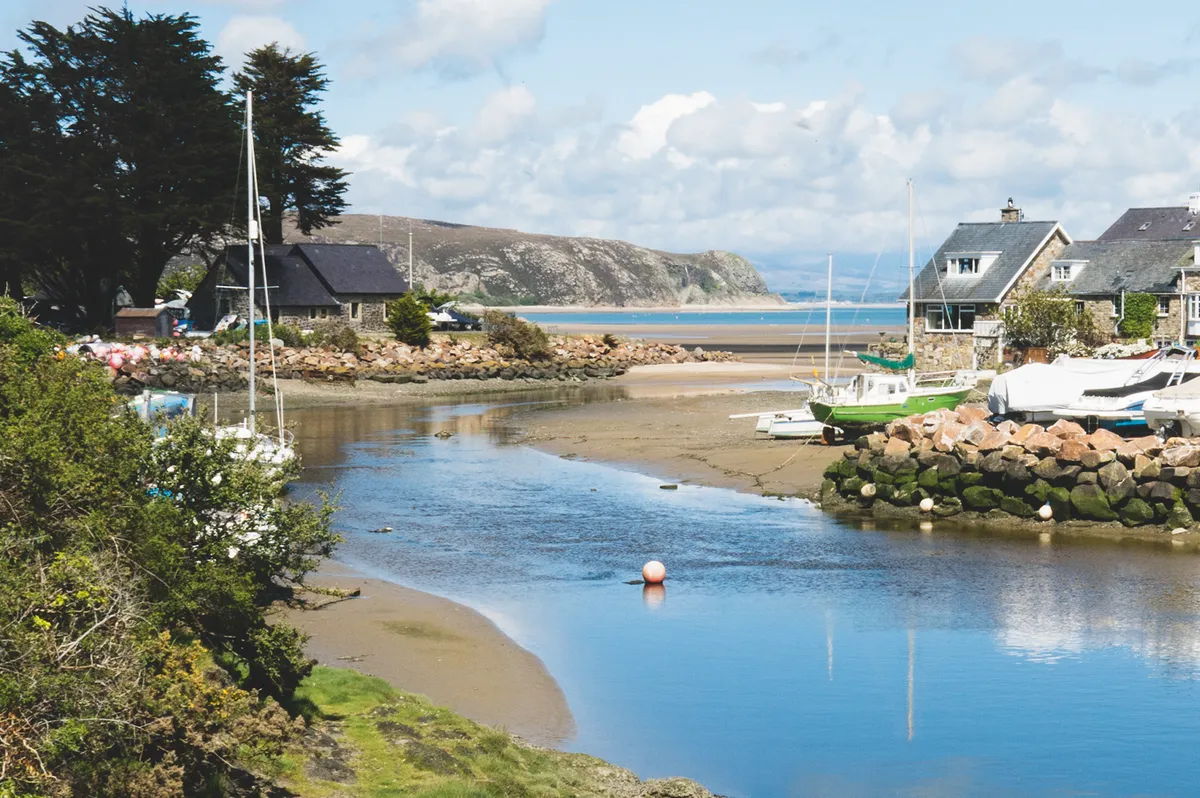
Abersoch sits in a sheltered spot on the south side of the Llŷn Peninsula, a slender finger of land reaching out into the Irish Sea at the north-western tip of Wales.
Like many other settlements looking out on to the vast blueness of Cardigan Bay, the village once relied heavily on fishing for its income, with herrings a particularly lucrative catch. Small-scale fishermen still operate out of the harbour, mostly bringing in lobsters and crabs, and you can book fishing trips with local boat operators.
A wander around the village is a slow affair, with visitors repeatedly being lured from their explorations by the many bars and cafés lining the street leading down to the harbour. Once you reach the point where the river, the Afon Soch, opens out into the sea, you’ll need to stop again, this time to take in the jagged skyline along the eastern horizon: the mountains of Snowdonia.
Portbraddan, County Antrim

Nestled beneath the rock face at the far side of White Park Bay is Portbraddan, an idyllic collection of houses fronted by a tiny harbour. You’ll have to cross more boulders to reach the hamlet itself. At the western end is Portbraddan Cottage; the National Trust-run property sleeps six and is the perfect base for a family holiday.
Blakeney, Norfolk
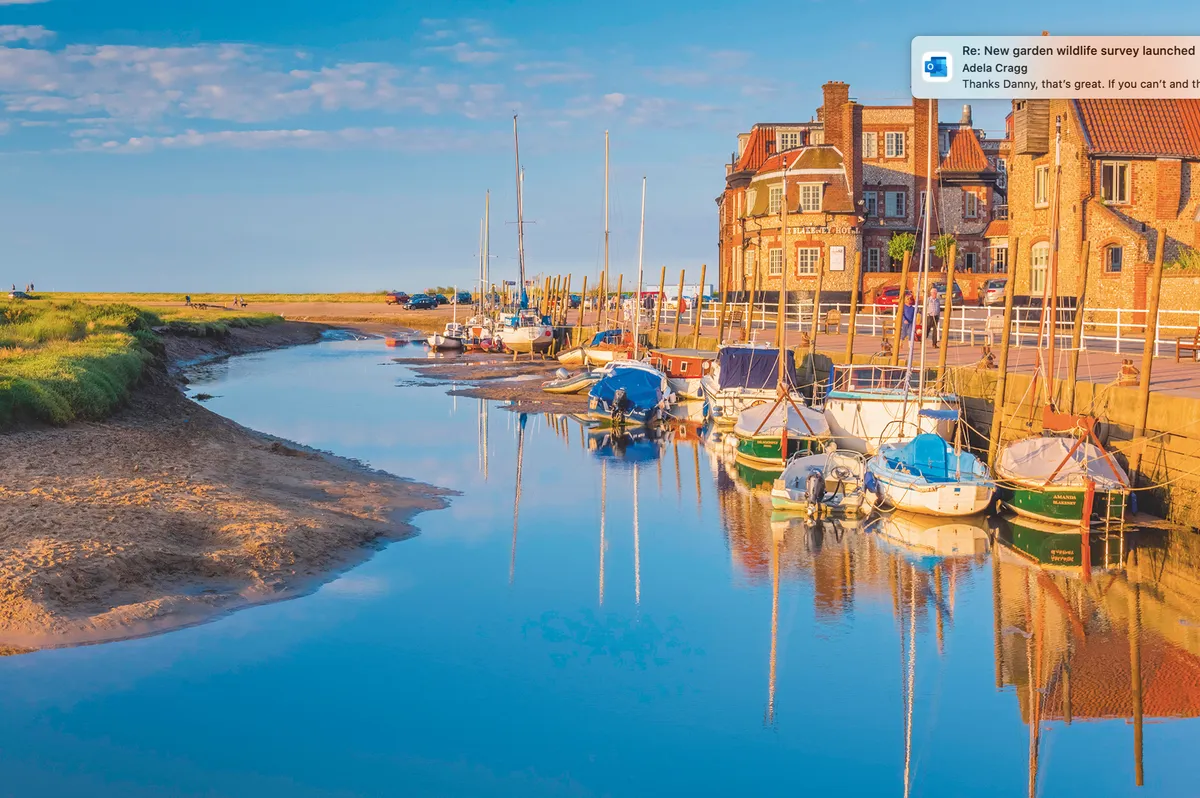
The tang of salty sea air and the clinking of halyards add to the sensory experience as you gaze out over saltmarsh and tidal creeks at those famously big North Norfolk skies, the deep orange sun sinking slowly over the horizon.
A barn owl hovers in the air as it hunts small rodents. When the sun comes up tomorrow to cast Cley Windmill into silhouette, the marsh harrier will be hanging over those same reedbeds.
Today Blakeney is a quiet little haven, but from the Middle Ages through to the very early 20th century, this was a bustling seaport with a thriving fishing industry and distant trade in spices and oriental cloths.
Lower Fishguard, Pembrokeshire
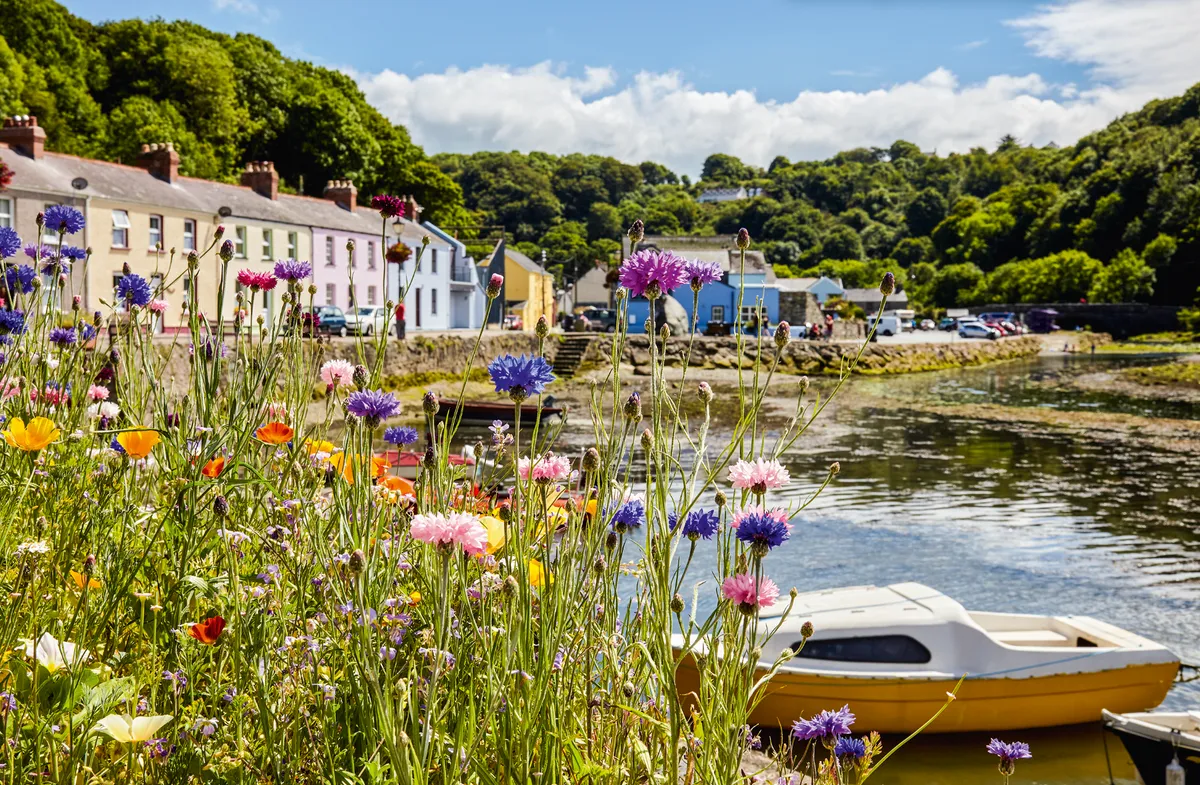
Cocooned between Pembrokeshire’s rugged coastal cliffs, Lower Fishguard can trace its herring industry back to the 16th century. During Elizabeth I’s reign, enough herrings were landed here to feed her entire army. Even the locals were called ‘sgadan Abergwaun’ (which translates in English to ‘Fishguard herrings’).
Near the car park, a bronze sculpture of a shoal of herrings celebrates the catch that was once the backbone of this harbour’s economy.
Quaint cottages line the quayside where herring stores once stood. In 1971, it was the perfect set for a film of Dylan Thomas’s Under Milk Wood, starring Richard Burton, Elizabeth Taylor and Peter O’Toole. One such building, the Fishguard Yacht Club café, offers mouthwatering diversions, including locally caught fresh fish, shellfish and local ice cream.
